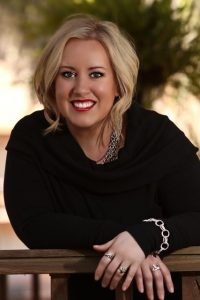© 2017 Bethany Jett
When I first heard that I had to take a one sheet to a writers conference, I thought, “A one sheet of what?” My book was still mostly an idea in my mind, but it forced me to think it through from beginning to end.
to a writers conference, I thought, “A one sheet of what?” My book was still mostly an idea in my mind, but it forced me to think it through from beginning to end.
What Does a One Sheet Do?
The one sheet’s primary purpose is as an introductory tool so an agent or editor can get an idea of who you are and what your book is about. Its other purpose is to distract the editor while you take a few deep breaths and wipe your sweaty palms down the leg of your pants.
Though it’s important to keep the one sheet professional, it will not make or break you. The majority of the time, the editor will scan it and hand it back, so you don’t even need a lot of copies.
What Do I Include?
Contact information
All you need is your name, email address, and website. For safety reasons, leave your address and phone number off. If you’re represented by an agent, include his or her contact information.
Headshot and Bio
Keep the headshot professional and small. You have a lot of information to include, and your headshot doesn’t need to take up half the space. The same goes for your bio. Include relevant detail and provide a call to action for people to check out your website or social media platform.
Book Title and Blurb
Think of this as back cover copy or a short synopsis. You’ll need a great hook as well as details about how the book progresses.
Book Statistics
Include your approximate final word count (even if the work isn’t finished), genre, target audience, and how long it will take you to complete if it’s not done. If you have endorsements, include a couple here, as well. This gives the editor an idea of the type of book you’re pitching.
Relevant Photo
Your one sheet should look beautiful. Make sure the image is relevant to your topic. My first one sheet did not include a photo. It would have helped things tremendously. That said, keep the aesthetic of your one sheet clean and don’t be afraid of white space or color.
How Do I Make One?
Use a software program that is familiar to you. On non-Mac computers, you can use Microsoft Word or Publisher. For Mac fans, Pages works well. For photo editing, Canva and PicMonkey are great for adding text, editing, and resizing photos.
Keep your fonts readable—don’t use the Comic Sans font!—and don’t add anything that doesn’t belong. Your one sheet not only reflects your book, but it reflects who you are as a writer.
My first one sheet was a disaster, but even so, I signed a contract three months after the conference. The important thing to remember is that you and your ideas are the most important thing. Do your best to make your one sheet amazing, but at the end of the day, an editor or agent will work with you because they like your book idea and they like you.
Resources:
Photo editing: Canva and PicMonkey
More on one sheets from: Rachel Gardner, Edie Melson, and Andy Lee
Bethany’s first one sheet in all its tragic glory
____________________
Bethany Jett is the award-winning author of The Cinderella Rule, speaker, ghostwriter, and founder of JETTsetter Ink, a consulting and editing company. She has written for numerous publications, created the My Moments Planner, Serious Writer Companion, and is the founder of Serious Writer Academy and the Build Your Brand Program. Her newest work, Through the Eyes of Hope,released January 2017. Visit her website or connect with her on Facebook, Pinterest, Instagram or Twitter.

